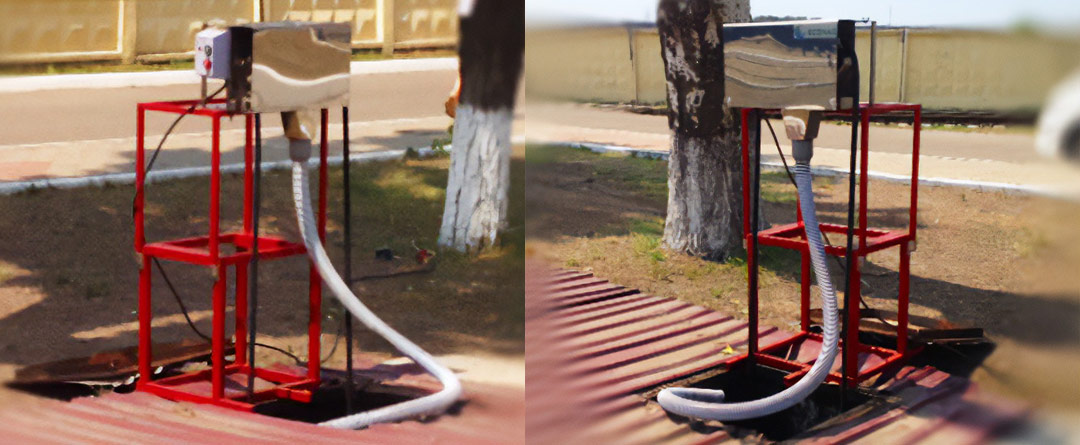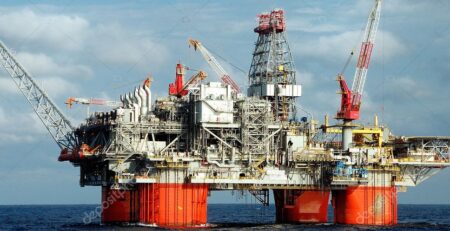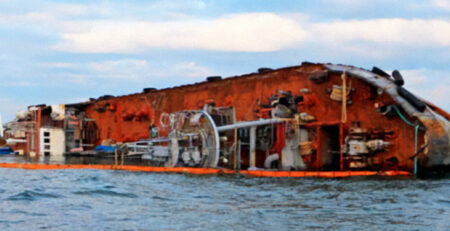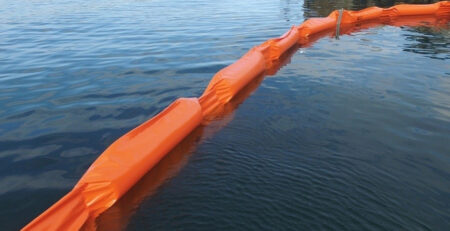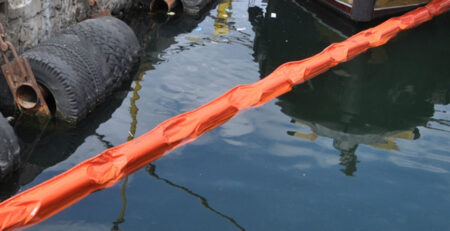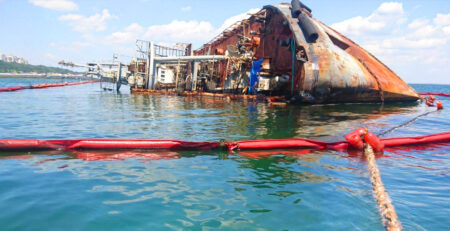What is an Oil Tube Skimmer? The Essential Guide
For many businesses, managing water that contains oil is a constant challenge. This could be in a factory, a wastewater plant, or even a port. An effective solution is often needed to remove this oil. This is where an oil tube skimmer comes in.
An oil tube skimmer is a mechanical device specifically designed to remove oil and other hydrocarbons from the surface of water. Its main job is recovering oil in various settings, including industrial processes, wastewater treatment facilities, and marine environments like docks and harbours. For businesses, using an oil tube skimmer is crucial for meeting environmental rules and improving how efficiently they operate. It helps keep operations clean and compliant.
A common and highly effective type is the tube type oil skimmer. The main idea behind this skimmer is using a special collector tube that attracts oil. This tube floats right on the water’s surface.
The collector tube is typically made of a material that oil sticks to, known as oleophilic. It forms a closed loop, meaning it moves continuously in a circle. The tube type oil skimmer has several key parts working together.
- Flexible Floating Tube: This is the part that touches the water. It’s flexible so it can move over uneven surfaces and around objects.
- Drive Mechanism: This electric or hydraulic motor pulls the tube through the water and back into the skimmer unit.
- Scraper Assembly: As the tube enters the skimmer unit, this part physically scrapes the collected oil off the tube’s surface.
- Collection Reservoir: This is where the scraped oil is gathered after being removed from the tube.
How the Floating Tube Skimmer Mechanism Works
The process of a floating tube skimmer is simple yet effective. It works through continuous circulation. The flexible tube is driven by the motor, causing it to move across the water surface. As the tube floats, it attracts and picks up oil that is floating on top of the water.
Because the tube is flexible, it can easily navigate around debris like trash or wood floating in the water. It can also adjust to changing water levels, ensuring it always stays on the surface where the oil is.
After the tube travels its path on the water, it returns to the main skimmer unit. Here, the scraping process happens. A set of scrapers gently but effectively remove the oil that has adhered to the tube’s surface. This oil then falls into the collection reservoir inside the skimmer unit. From there, the removed oil is typically channeled into a separate collection tank. This tank holds the oil for storage, proper disposal, or even potential reuse if the oil is clean enough.
Key Benefits and Advantages
Businesses choose oil tube skimmers for many good reasons. One major benefit is selective oil recovery. The special oleophilic material of the tube means it attracts oil much more than water. This results in the recovery of oil that is relatively pure, with very little water mixed in.
These skimmers are also excellent for continuous operation. Their design allows them to run constantly, removing oil consistently over long periods without needing frequent stops. This helps prevent oil buildup.
Another advantage is their debris handling capability. Unlike some other types of skimmers that can get clogged by floating trash, the flexible tube of an oil tube skimmer can often move past or push aside smaller debris.
Versatility is also a key feature. Oil tube skimmers are effective on a wide range of oils, greases, and fats. They can handle substances with different thicknesses (viscosities), from light oils to thick greases.
Finally, they offer significant benefits for compliance and resource recovery. By efficiently removing oil, businesses can more easily meet strict environmental regulations for water discharge. In some cases, the recovered oil can even be valuable, serving as a recoverable resource rather than just waste. This reduces waste disposal costs.
Applications for Businesses
Oil tube skimmers are valuable tools across many industries. They are commonly used in industrial sumps and coolant tanks. Here, they remove ‘tramp oil’—oil that leaks from machinery into cutting fluids or coolants. Removing tramp oil extends the life of these fluids and improves the quality of manufactured parts.
Wastewater treatment plants heavily rely on them. Oil tube skimmers often serve as a first step in the treatment process. They remove surface oil before the water moves on to further cleaning stages or is discharged. This is essential for staying within legal discharge limits for oil content.
Ports, marinas, and marine spill response teams also use Oil tube skimmers. They are deployed to recover oil from small spills, bilge water, and general surface contamination in watery areas and docks. typical oil skimmer uses include removing accumulated oil in settling ponds or tanks before discharge typical oil skimmer uses. This helps keep harbours clean and safe.
Manufacturing and processing facilities of all types find them useful. Any place where oil separation from water is necessary can benefit. This includes industries like steel mills, mining operations, food processing plants, and oil and gas exploration or refining sites. A continuous oil skimmer is often preferred in these settings due to the ongoing nature of operations.
The Efficiency of a Continuous Oil Skimmer
Choosing a continuous oil skimmer, particularly a tube type, offers specific efficiency benefits. The main advantage is uninterrupted operation. Because the skimmer runs constantly, it ensures a steady recovery rate. This prevents oil from building up over time, which could lead to potential overflows or increased contamination.
This continuous operation also means reduced manual intervention. Once set up, the skimmer works on its own, minimizing the need for staff to perform manual skimming or constantly monitor the system for oil levels. This frees up valuable labor.
Furthermore, consistently removing oil improves overall system health. Oil contamination in process fluids or wastewater can damage pumps, filters, and other equipment. It can also shorten the life of valuable fluids like coolants. A continuous oil skimmer helps maintain cleaner fluids and systems, leading to less maintenance and longer equipment lifespan.
Factors to Consider When Choosing a Tube Type Oil Skimmer
Selecting the right tube type oil skimmer requires careful thought. You need to analyze the type and viscosity of the oil you need to recover. Different oils stick to the tube differently, and the thickness affects how easily it’s scraped off. This helps determine the best tube material and the required drive mechanism power.
Assessing the operating environment is also critical. Consider if there’s a lot of debris, how much the temperature varies, if there are corrosive chemicals present that could affect materials, and how much physical space is available for installation.
Determine the required oil recovery rate. How quickly does oil accumulate on your water surface? Choose a skimmer with a capacity that can handle your specific contamination level to keep the surface consistently clean.
Finally, evaluate the ease of installation, operation, and maintenance. A skimmer that is simple to set up, easy to run, and requires minimal, straightforward maintenance will be more cost-effective and reliable over the long term.
Conclusion
In summary, oil tube skimmers are highly effective tools for managing oil contamination on water surfaces. Their key advantages lie in their efficiency, versatility across different oil types and environments, reliability for continuous operation, and ability to handle some level of debris.
For businesses focused on environmental responsibility, operational efficiency, and even resource recovery, oil tube skimmers represent a crucial investment. They are a proven and dependable solution for separating oil from water surfaces, helping companies meet compliance standards and maintain cleaner operations.

